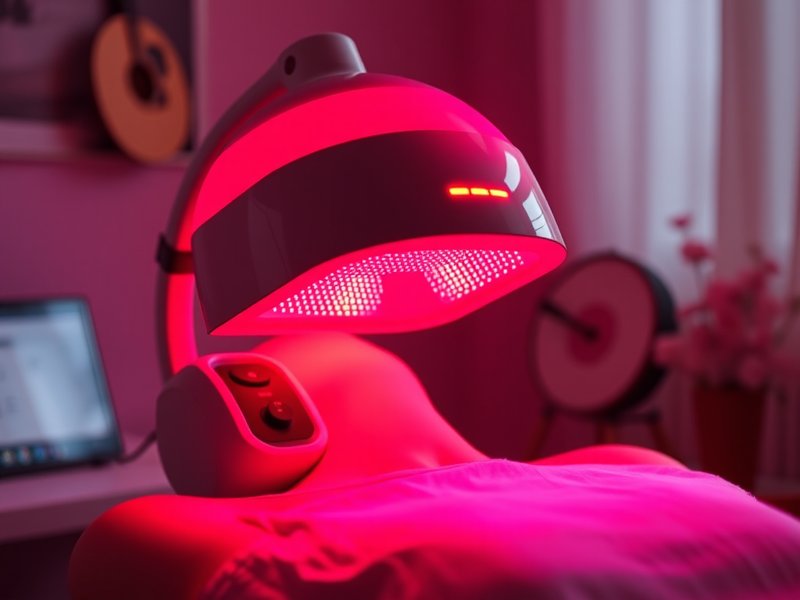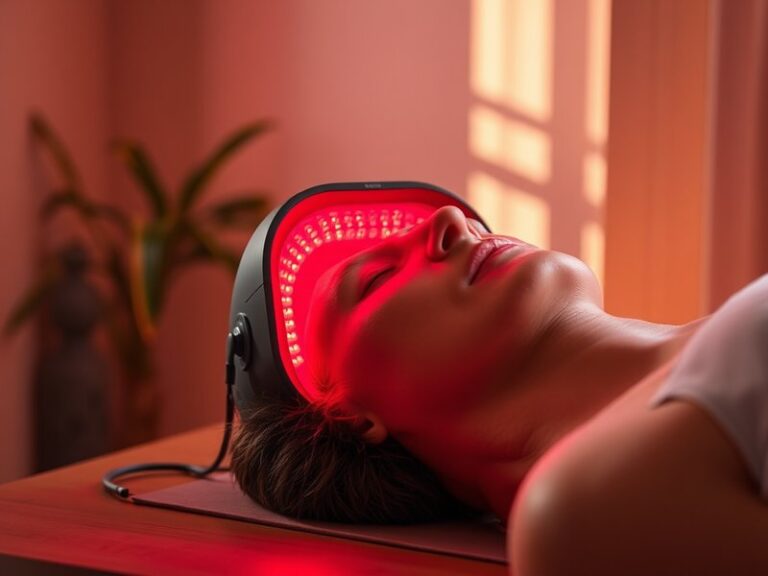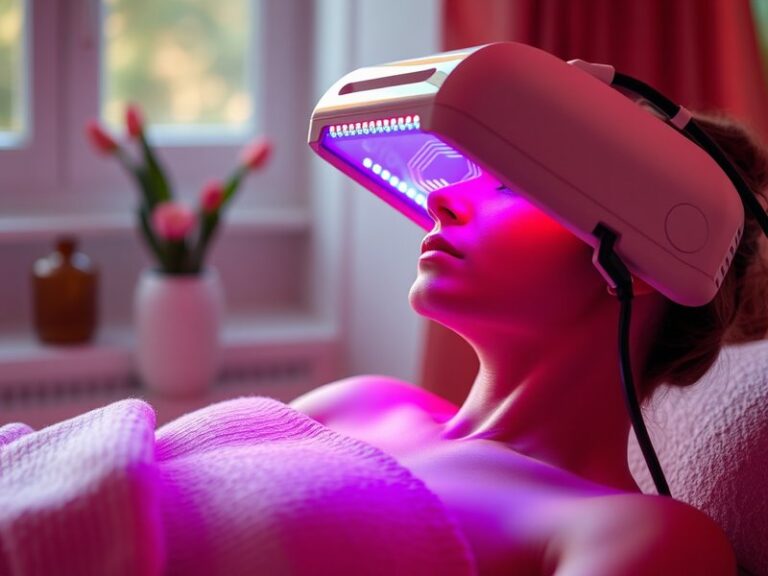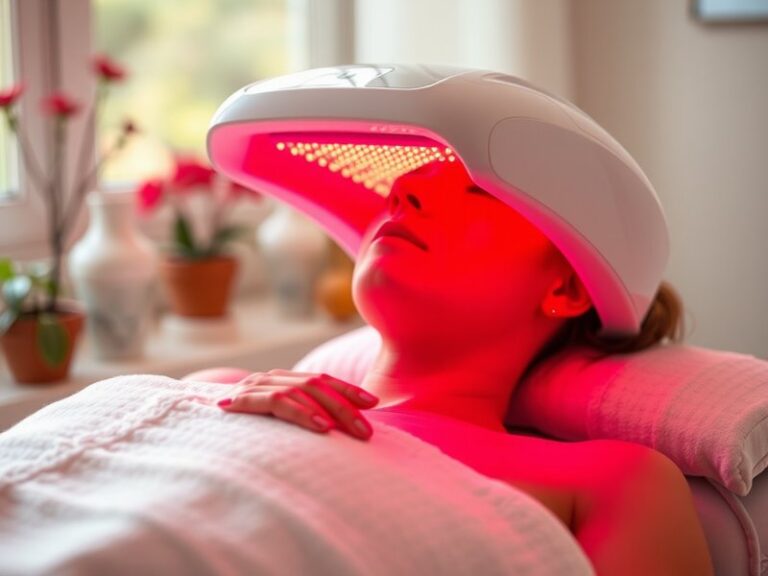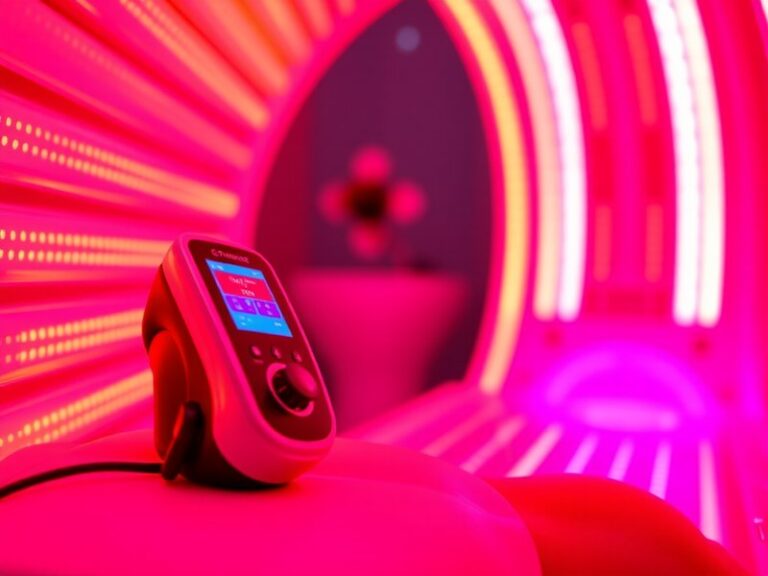Does Red Light Therapy Increase Dopamine?
Does Red Light Therapy Increase Dopamine?
Have you ever wondered if a light can enhance your mood or boost your motivation? Red light therapy, a treatment gaining traction in wellness circles, has sparked curiosity about its potential effects on neurotransmitters such as dopamine. This article will dive into what red light therapy is, its benefits, its relationship with dopamine, and other considerations surrounding this innovative treatment.
Key Takeaways
- Red light therapy is thought to promote the production of dopamine, potentially enhancing mood and cognitive function.
- Numerous studies underscore the myriad benefits of red light therapy, including improved sleep, reduced inflammation, and boosted energy levels.
- While promising, further research is needed to fully understand the long-term effects and potential limitations of red light therapy.
What is Red Light Therapy?
Red light therapy (RLT) is a non-invasive treatment that uses low-level wavelengths of red light to address various health issues. Historically rooted in medical practices, it has found its way into wellness and aesthetic applications, including skin rejuvenation and pain relief.
The therapy operates on the principle of photobiomodulation, where specific wavelengths of light stimulate cellular functions. By penetrating the skin, this light is absorbed by the mitochondria within cells, potentially enhancing ATP production—an energy-carrying molecule in the body. Increased energy at the cellular level can promote healing, regeneration, and potentially even mood enhancement.
Red light therapy has captured interest due to:
- Its non-invasive nature and ease of application.
- The growing body of research supporting its effectiveness across various applications.
- Its potential as an adjunct treatment in mental health by altering neurotransmitter levels, including dopamine.
What are the Benefits of Red Light Therapy?
Red light therapy offers a range of benefits that appeal to both physical and mental well-being.
Pain Relief and Recovery
Red light therapy has been shown to reduce pain and aid in recovery from injuries. Clinical studies suggest that it can alleviate chronic pain conditions such as arthritis and muscle strain, thus improving overall physical wellness.
Enhanced Mood and Cognitive Function
Research indicates that red light therapy may increase the levels of dopamine in the brain. This neurotransmitter is crucial for motivation, pleasure, and cognitive function, making RLT a potential ally in combating mood disorders like depression and anxiety.
Improved Sleep Quality
Another benefit of red light therapy is its potential to improve sleep. By regulating circadian rhythms and boosting melatonin production, RLT can foster a more restful and rejuvenating sleep experience.
Skin Health
RLT is widely recognized for its skin benefits, including reducing wrinkles, improving skin tone, and promoting wound healing. Its effects are attributed to increased collagen production and enhanced blood circulation in the skin.
Reduced Inflammation
Red light therapy can also significantly reduce inflammation. This is particularly beneficial for individuals suffering from chronic inflammatory conditions, allowing for better overall health and mobility.
Is it Possible to Increase Dopamine with Red Light Therapy?
The relationship between red light therapy and dopamine levels is a growing area of interest within scientific research. Initial studies suggest that exposure to specific wavelengths of red and near-infrared light can influence dopamine release, potentially offering therapeutic benefits for mood regulation and cognitive enhancement.
What are the Advantages of Increasing Dopamine?
Increasing dopamine levels through red light therapy could lead to several positive outcomes:
Learn the whole story Can a red bulb be used for red light therapy?
- Enhanced Motivation: Higher dopamine levels are linked to increased motivation and a greater sense of reward, offering users a mental boost.
- Improved Focus: Many individuals report improved concentration and cognitive clarity after undergoing red light therapy, possibly due to the effects on dopamine.
- Mood Stabilization: For individuals dealing with depression or anxiety, higher dopamine levels could help stabilize and elevate mood.
What are the Disadvantages of Increasing Dopamine?
While increasing dopamine could have many benefits, it is crucial to recognize potential downsides:
- Dopamine Dysregulation: Manipulating dopamine levels must be approached with caution, as excessive levels can lead to problems such as addiction or mood swings.
- Individual Responses: Not everyone may experience the same effects from red light therapy; individual biochemistry can affect outcomes.
- Need for Research: Much of the data linking red light therapy to dopamine is preliminary and requires further study to confirm and understand the implications.
What are the Things to Consider Before Trying Red Light Therapy?
Before embarking on a red light therapy regimen, several important considerations should be addressed.
Consult a Healthcare Professional
It’s crucial to discuss any therapy, especially one affecting mood or neurotransmitter levels, with a healthcare provider to ensure it aligns with your health needs and conditions.
Understand the Specifics of the Treatment
Familiarize yourself with the type, duration, and frequency of red light therapy sessions recommended for your individual goals. Different devices and wavelengths may yield varying results.
Be Mindful of Existing Conditions
Consider existing health issues that may influence how your body responds to red light therapy. Certain conditions may require tailored approaches or precautions.
Additonal Considerations
- Track Your Progress: Keeping track of mood and cognitive changes can help you determine the effectiveness of the therapy.
- Be Patient: Benefits may take time to manifest, so patience and consistency in treatment are essential.
- Create a Comfortable Environment: Ensure that the space where therapy is conducted is conducive to relaxation, enhancing the overall experience.
What are the Alternatives to Red Light Therapy?
There are several alternatives to red light therapy that may also help enhance dopamine levels or improve overall well-being.
Exercise
Regular physical activity is one of the most effective natural ways to boost dopamine levels. Exercise stimulates the release of endorphins and promotes overall mental health.
Dietary Changes
Certain foods, such as those rich in tyrosine (e.g., bananas, avocados, and nuts), can support dopamine production. Incorporating a balanced diet can thus serve as a natural alternative or complement to red light therapy.
Mindfulness and Meditation
Practices like meditation, yoga, and mindfulness can promote dopamine production while lowering stress. These methods not only support mental wellness but also reinforce emotional resilience.
Additional Alternatives
- Music Therapy: Engaging with music has been shown to increase dopamine levels and enhance mood.
- Supplements: Certain vitamins and amino acids may support dopamine production and overall brain health.
- Sunlight Exposure: Natural sunlight can stimulate dopamine secretion, making outdoor activities another viable option.
Conclusion: Is it Recommended to Use Red Light Therapy to Increase Dopamine?
In summary, red light therapy presents a promising avenue for potentially increasing dopamine levels and benefiting mental and emotional health. While many advantages are associated with its use, individuals should consider their unique circumstances, consult healthcare professionals, and monitor effects thoughtfully. As with any treatment, balancing potential benefits against risks will lead to informed decisions regarding its implementation.
Frequently Asked Questions
Can red light therapy be used for mental health purposes?
Yes, red light therapy is being researched for its potential benefits in mental health, including its effect on neurotransmitter levels like dopamine.
How often should one undergo red light therapy?
Frequency can vary based on individual needs; typically, sessions range from a few times weekly to daily, depending on the desired results and physician recommendations.
Are there any side effects associated with red light therapy?
Generally, red light therapy is considered safe with few side effects. Some users may experience temporary redness or irritation but usually do not encounter serious issues.
Is there scientific evidence supporting red light therapy’s effect on dopamine?
While initial studies show promise, ongoing research is needed to validate these findings and explore the implications fully.
Read our complete guide Is Excess Red Light Therapy Harmful?
Can I combine red light therapy with other treatments?
Yes, red light therapy can often be used alongside other treatments but always consult with a healthcare provider to ensure it is suitable for your specific situation.
